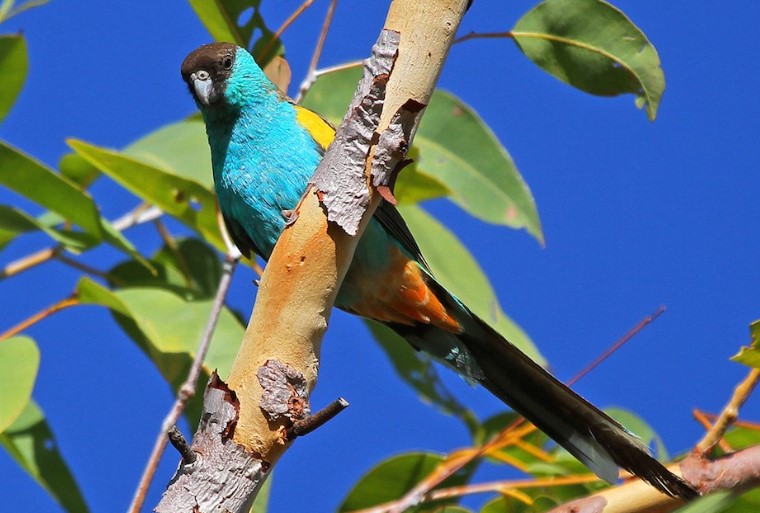Hooded Parrot (Psephotus dissimilis) and Golden-shouldered Parrot (Psephotus chrysopterygius) are closely related not only in appearance but also in feeding and breeding habits. The Hooded Parrot flocks consist of a group of 20 and 30 birds, and their alarm call is more screeching, but otherwise, they are alike. The two parrot species are considered distinct races by some ornithologists.
Despite this, they have significant differences in appearance. Its males have an all-black face, complete golden shoulders, and ventral red restricted to the crissum; its females have a blue-green belly and red crissum. All in all, these differences are substantial, and they are comparable to those indicating separate species in other sympatric Australian grass parrots.
Also known as the Black-hooded Parakeet or Anthill Parrot A hooded parrot’s length is approximately 260–280 mm, including a slender, tapered tail. In captivity, the hooded parrot breeds readily, but its aggressiveness prevents it from living in a mixed aviary with other parrot species.

Male: The forehead, lores, crown, and nape are black; the mantle and back are mid-brown; and the rump and upper tail covers are turquoise-green. Shoulders are golden-yellow, underwing coverts and bends of wings are bluish-green, and the outer webs of flight feathers are dusky. The throat, breasts, and belly are turquoise-green. The crissum is pale red. The tail feathers are bronze-green in the center; the outer feathers are blue-green, tipped with blue. There is a dark brown color to the eyes. The bill is pale gray, and the cere is dark gray. A mid-brown color covers the feet, toes, and claws.
Female: Undertail coverts are salmon-pink; general plumage is olive-green with pale blue tinges on cheeks, lower breast, belly, and rump. The underside of flight feathers has an off-white stripe.
An immature bird gains full adult plumage at the second annual molt, similar to an adult female with brighter green cheeks. The downy young is a white-downed, yellow-billed

An alarm call from a hooded parrot is a harsher chissik-chissik call; chu-weet is a whistled call. Genetic studies indicate that its ancestors diverged from those of other species during the end of the ‘Hill Gap’ during the late Miocene and early Pliocene.
April–July is the nesting and breeding season. A termite mound can be used to nest in a burrow. Hooded parrot cavities are dug in termite mounds. The termite prefers conical termite mounds and digs at the edge rather than the face of two-dimensional termite mounds. Three weeks are required for excavation.
The Hooded Parrot lays two to six eggs; they are white and round in shape and measure about 21 x 18 mm. A female’s incubation period is approximately 19–20 days. In five weeks, the young fled. A hooded parrot can be found in southern and eastern Arnhem Land. In dry and open eucalypt forests and grassland, it is uncommon. There are no races.







